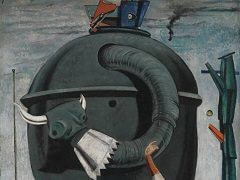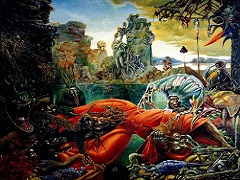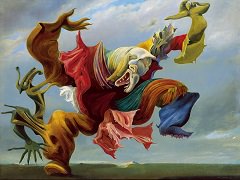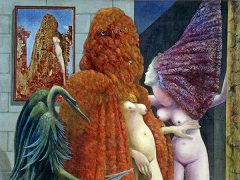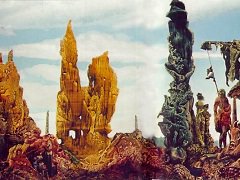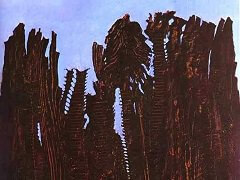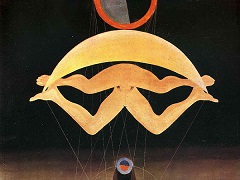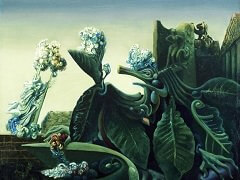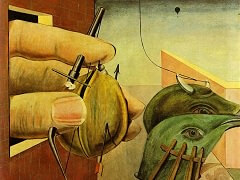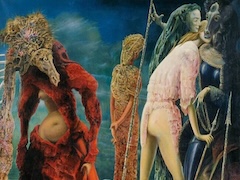Napoleon in the Wilderness, 1941 - by Max Ernst
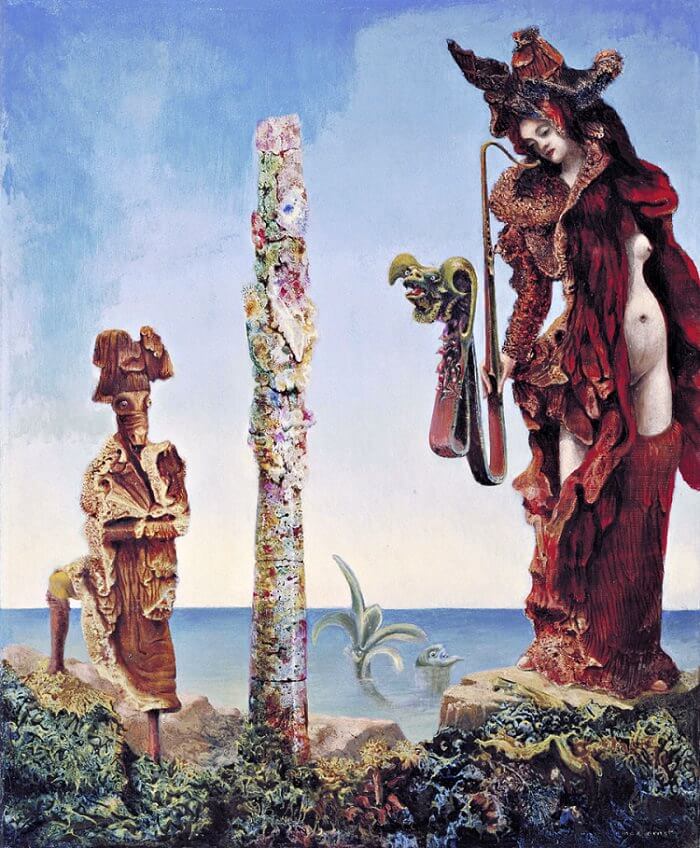
Napoleon in the Wilderness dates from 1941, the year in which Germany launched its Russian campaign on the Eastern Front. It presents a Surrealist interpretation of the theatre of World War II by Max Ernst.
Napoleon in the Wilderness was painted in the USA, where the artist had made a new home after fleeing Europe. Max Ernst here shows us a fantasy world combining references to different historical epochs and cultures. It is tempting to link this painting, with its strange group of figures on the seashore, with the situation of the artist in exile.
In order to create the captivating colors of the painting, Max Ernst used a special artistic technique called decalcomania. Decalcomania developed in eighteenth-century England was first used by the Surrealist Oscar Dominguez in 1936 and later taken up by Max Ernst. The artist produced works starting in the late 1930s in which paint was spread over some parts of the canvas, then glass or a sheet of paper was pressed onto it. Chance air bubbles, rivulets, and branchings of paint producing a varied surface structure also came about when the glass or paper was lifted from the canvas. In a further step, he used a paintbrush to transform the found structures, recalling coral or moss.
Leonardo da Vinci had already discussed a similar artistic procedure around 1500 in his Trattato della pittura: "when you look at a wall spotted with stains, or with a mixture of stones, if you have to devise some scene, you may discover a resemblance to various landscapes, beautified with mountains, rivers, rocks, trees, plains, wide valleys and hills in varied arrangement."
Stimulated by the structures, it became possible to produce stalagmite-like thickets populated by fantastic creatures on the canvas. By adding paths and horizon lines, the artist was able to create the impression of fantastic landscapes in Napoleon in the Wilderness.

